Birding, also known as bird-watching, is a fun activity for kids and adults of all ages.
Birding for Kids! Bird watching is a great way to get kids outside learning and having fun. Children of all ages will love this list of bird-watching activities and lessons for kids from toddlers to teens. Birdwatching is a great way to study nature at home or school, and of course in the great outdoors. Watching and observing birds of many different feathers is an educational outdoor wildlife activity for young and old alike. It’s fun to spy on birds from the window or patio, in the front or back yard, schoolyard, park, and out in the wild. You might also enjoy this list of Outdoor Learning Activities for Kids.
How do you start birding?
Wondering how to start birding with kids? Begin by inviting children to observe birds with the naked eye and with binoculars and telescopes. Point out a bird you see or hear and ask your students or children a few questions about it. This will help them discover the wonderful world of birds in the air, on land, and in water, beginning with the most common birds that live around them. This basic birding activity will not only fill children with wonder but ignite their curiosity. Before you know it, they will want to know more about the birds they see and hear, and you will be off to a great start.
For several more bird-watching ideas, try the easy ways to start birding with the fun list of bird-watching activities for kids and adults below. First published on March 14, 2016; this backyard birdwatching post is updated and republished with the latest and greatest birding ideas and activities for kids, along with the adults who act as their teachers, guides, mentors, and fellow nature explorers. Bookmark this page and check back to see what’s new! You might also enjoy learning more about Nature Study for kids and the adults who guide them.
Beginning Birding for Kids and Adults: How To Start Bird Watching
Children and adults love to observe and identify birds, both for fun, and to learn more about them. This post and the bird activity ideas it contains will help you teach children about birds and get them started with bird watching. Birdwatching is an easy way to study nature in your own backyard. All you need to do is get outside, stop, look, and listen; you will likely notice a few birds.
Once you engage a child’s curiosity; hand them a pair of binoculars and a bird field guide and you will be off to a great start. Another great way to get kids started with birding is to take them on a bird-watching adventure at a local park, State Park, National Park, or Nature Reserve. Not only is going birding an educational field trip for kids and adults of all ages, but it is a lot of fun, too!
Kids and outdoor enthusiasts of all ages love observing and identifying birds to learn more about them. Invite kids of all ages to use Bird-watching printables to count the number of birds they identify, and begin to record their birding observations and experiences in the natural world. You might also enjoy this list of squirrel facts and learning ideas. Scroll down for a list with several more birding or birdwatching activities and lessons for preschoolers, kindergarteners, elementary-aged kids, tweens, teens, and adults too!
What are the Benefits of Bird Watching?
Birding is a lifelong hobby that has many educational rewards for young and old alike. The list of birding or bird-watching activities and lessons for kids in the next section can help children (or adults) learn about birds and increase their knowledge about the many types or species of birds native to their environment and the world beyond. It can also help foster a lifelong interest in nature and instill values of conservation and stewardship in the next generation.
Bird Watching Gets Kids Outside
Another benefit of birding for kids is that the best bird watching happens outdoors. In other words, this list of birding activities can help get kids outside to create a connection with the natural world and the secrets that it shares. Exposure to nature and the great outdoors has several far-reaching physical, mental, emotional, and spiritual benefits for young and old alike, including the enhanced ability to self-regulate.
Creating a connection with nature in our children is also beneficial because it is likely to help increase conservation efforts in the future. People do not care about what they do not understand or feel connected to. When we connect children with nature and all of Mother Earth’s many varied creatures, including birds, we create a greater chance of sustaining life as we know it on Planet Earth. Even more importantly, we open the door to the possibility of improving it for all beings on earth. For more ways to get kids outside learning and having fun; look at this quick list of outdoor activities for kids and adults–>Get Outside and Connect.
Birding Helps Us Stay Present
When people are outside bird watching, they immerse themselves in the experience and joy of the present moment. Birding causes us to stop, pay closer attention, and notice the little details more acutely. We become more aware of everything. Our innate intuition and spidey senses begin to tingle and we start to open our senses more fully.
Colors become more vibrant, and we can hear every sound more clearly. From the gentle twitter of a bird in the distance, and the almost silent scampering of a wren, to the far-off cry of a hawk. This is precisely what most mindfulness practices advocate. Get out there and become more mindful and aware of your surroundings. Similar to getting on a yoga mat, you just might be surprised at what you discover.
Birds Make Us Happy!
Believe it or not, birds make us happy, and today, there is research to prove it. Exposure to nature and its many varied winged creatures can help improve well-being. A study published in Bioscience 2017 suggests that birdwatching can improve physical and mental health as it helps reduce stress, anxiety, and depression.
In other words, getting outside to watch birds helps us get exercise and feel more at peace. Interestingly, the study concludes that birders didn’t need to interact with the birds to derive these benefits. Our mental health can be improved by just watching or listening to birds. No wonder bird-watching (and listening) is such a universally popular activity!
Birds increase feelings of happiness, joy, and fulfillment, and research repeatedly proves this to be true. A study by the German Center for Integrative Biodiversity Research published in Science Daily connected greater bird biodiversity to increased life satisfaction.
The study found that people who live near natural areas with a greater diversity of bird species proved to be happier. Fortunately, seeing a wide variety of birds isn’t the only thing that affects our moods positively. Hearing them is just as beneficial for our bodies, minds, and spirits.
Birding Allows Children to Take Charge of Their Education
One of the greatest benefits of backyard birdwatching is that it allows children to search for answers to the questions that matter most to them, take charge of their education, and become the much-needed environmental stewards of tomorrow. Keeping endangered birds alive and protecting our future is an important job for each of us. Have a look at this list of Outdoor Activities for Kids for more educational outside activities and nature study ideas.
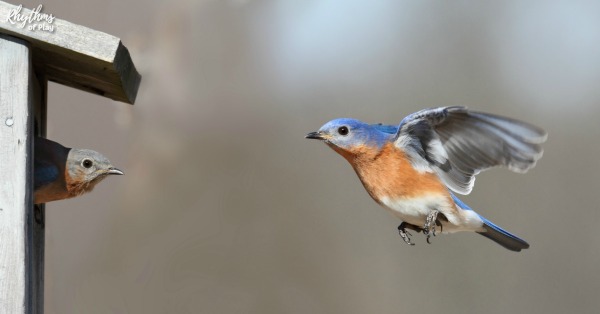
Best Bird-Watching Activities for Kids and Adults
Birding, also known as bird watching, is a great way to get kids outside to learn and have fun. First, grab the recommended bird-watching supplies for kids (and adults) from the list below. Next, use the recommended supplies, birdwatching activities, and ideas that follow to get kids started with birding in their backyard, local parks, and outdoors in nature.
One of the best times of the year to watch birds is late winter and early spring because most birds can be spotted migrating north to return home. During the fall and summer months, you can see birds migrating to, or living in their winter homes and habitats. But any day is an excellent day for birdwatching!
In the springtime, you can also get lucky and spot a few mating rituals. I had a great time watching two male mockingbirds compete for the affections of a lady mockingbird out my office window one spring morning. As a bonus, many birding activities make it easy to add literacy, math, science, art, and STEAM into a child’s education at home or in the classroom. You might also enjoy searching for the signs of spring or this spring scavenger hunt for toddlers and preschoolers.
How To Start Birding: 21 Beginning Birding Activities for Kids and Adults
Looking for easy ways to get kids into birding? Use the list of birding activities below to spark a child’s interest in nature and science and this will lead them to ask even more questions about the wide world surrounding them. First encourage children to observe birds and their basic bird behaviors in their front or back yard, schoolyard, neighborhood, or local park. It’s often easiest to start watching birds from your yard or patio, or even out the window, but almost anywhere birds are visible will work.
Next, head out into your local community to look for birds that live around you. Then take children to parks, nature reserves, and wild spaces to go birdwatching with the kids. Encourage children to record their observations in nature journals or birding logs. Use these printables to tally the number of birds they identify, and record their bird-watching observations and experiences. Finally, try the fun and educational birdwatching activities for kids (and adults!) below.
1. Gather Must-Have Bird-Watching Supplies and Learning Resources for Beginner Birders
What does a beginner bird watcher need? Below is an essential list of birding supplies for kids and adults who act as their teachers and guides. The list includes a few birding basics that will help new or young birders get started with bird-watching. It will also help you know what to use in the backyard, as well as what to bring on a birding adventure in the great outdoors.
It’s hard to go birding without something to help you see birds, and a guide to learn more about them. However, unlike binoculars, the guide can be left at home. This makes binoculars, or a camera or phone with a telephoto lens, the most essential thing required for bird watching because they help you see birds “up close” even from a distance.
We are constantly updating this “birding for kids” post with the newest educational birding books, backyard birdwatching supplies, and birding reference guides for children from toddlers to teens and the adults who act as their teachers and guides. So, bookmark this page and check back to see what’s new!
Best birding supplies for kids:
- Binoculars or a telescope to look for and spot birds in the backyard or wilderness. The most useful and necessary item for bird watching is a good pair of binoculars. Binoculars make it easy to see and enjoy birds at a distance. Choose at least one of the following:
- Compact Binoculars for kids and adults
- Full-Sized Binoculars
- Small Monocular Telescope (attaches to a cell phone)
- Large Monocular Telescope (with phone attachment)
- Bird Watching or Birding Feild Guide. Choose at least one of the following to identify the birds you see:
- Peterson Field Guide to Birds
- The Sibley Guide to Birds
- Wildlife Guide (This book does not have an extensive list of birds, but it is an extremely useful and comprehensive first field guide for kids.)
- Birding printables or a bird-watching log book to count the number of birds you see and record your birding experiences. Choose at least one of the following birding supplies:
- Bird-Watching Printables Bundle
- Beginning Birdwatcher’s Book (with 48 stickers!)
- Birder’s Logbook: A Seek-and-Sticker Book for Budding Ornithologists
- A Homemade Nature Journal
- Children’s Bird-Watching Journal
- Or a Bird Log
A few more Awesome but Optional Bird Watching Supplies:
Once you have collected a pair of binoculars for birdwatching (or a telephoto lens for a camera or cell phone), a field guide, and a few other birding supplies for kids from the list above. Grab a few more of the fantastic birding resources and bird books from the list of bird-watching supplies for kids below. You might also enjoy this list of Nature Study Supplies for Kids.
- Colored pencils, watercolor pencils, or a portable watercolor set to draw the birds you see and create gorgeous nature journal entries.
- Birds of North America Poster (Every Bird Species in North America)
- Backyard Birding Flashcards with 100 Common Birds of Eastern and Western North America.
2. Get Children Interested in Birding with Bird Books for Kids
Get kids more interested in birding with a few of the fantastic educational bird books on the list below. When paired with at least one of the birding field guides recommended above, these bird books for kids make great additions to your ornithological library. Following is a list of some of our favorite books about birds and birdwatching for kids. Each of these bird book recommendations will make a great addition to your growing collection of educational nature study resources.
Best Birding Books for Kids:
- Backyard Birds (Peterson Field Guides: Young Naturalists) – This comprehensive field guide and introduction to ornithology includes the birds you are most likely to see in the backyards of North America. It includes vibrant life-like illustrations that make each bird come alive. It also provides the best method for bird identification and an easy-to-use design that helps beginners succeed and have fun.
- Birds, Nests & Eggs – “A fun and informative take-along guide that will help children learn to identify 15 birds, and it features a few bird activities that are fun and easy to do.”
- National Geographic Kids: Bird Guide of North America – Here’s a beginning birding book for kids from National Geographic’s bird experts.
It has lots of fun bird facts kids love, beautiful photography, and interactive birding activities and crafts. The perfect way to bring the fun and amazement of birding to junior birders.
- What’s it Like to Be a Bird – “A bird book for birders and nonbirders alike that will excite and inspire by providing a new and deeper understanding of what common, mostly backyard, birds are doing—and why!”
- Burgess Bird Book for Children – Parents, teachers, and young readers worldwide will enjoy learning about birds with this classic nature book featuring Peter Cottontail and his many feathered friends. Learn all about the life and habits of several varieties of birds in this book about birds for kids. This wonderful bird book shares information about different bird families that is written like a chapter book and told in the form of a story.
- I recommend reading one chapter of this bird book aloud to children daily as a part of your homeschool education.
- Next, read the Burgess Animal Book or the Burgess Seashore Book for Children.
- Together, these books are a fantastic educational series for young and old alike!
3. Designate a Bird Watching Spot or Spots
Once you have gathered a few must-have birding supplies for kids from the lists above, it’s time to create a bird-watching sit spot inside or outside the home or classroom. We have a designated birding sit spot inside by the kitchen window where we keep our nature journal with bird-watching printables, bird field guides, and a pair of binoculars standing by.
When we want to look for birds in the backyard, we have chairs and a table set up that makes it easy to bring our birding supplies outdoors. And it just so happens that the sliding door to the backyard is right next to the birding supplies we keep on the kitchen counter. Having supplies and a spot readily available makes bird watching an easy daily learning activity in our home. Today, bird watching has become a daily habit that we thoroughly enjoy.
4. Enjoy Backyard Birdwatching
Bird-watching is a great way to study nature in your backyard! Our family loves watching various birds in our yard and garden from the windows of our house and in our yard. We call out to the sparrows, finches, jays, mockingbirds, warblers, chickadees, and other birds we see from our windows when we spy on them in our birdfeeders, and we even call some by name.
Backyard bird-watching is a fun activity for all ages. Both kids and adults love to observe birds and learn more about them. Download and print your favorite bird-watching printables. Or choose any of the fun birding activities listed below to get started!
Educators and their students can also do many backyard birdwatching activities for kids in the schoolyard, a nearby meadow, hiking trail, pond, or at the local park if you don’t have a backyard or patio that will work.
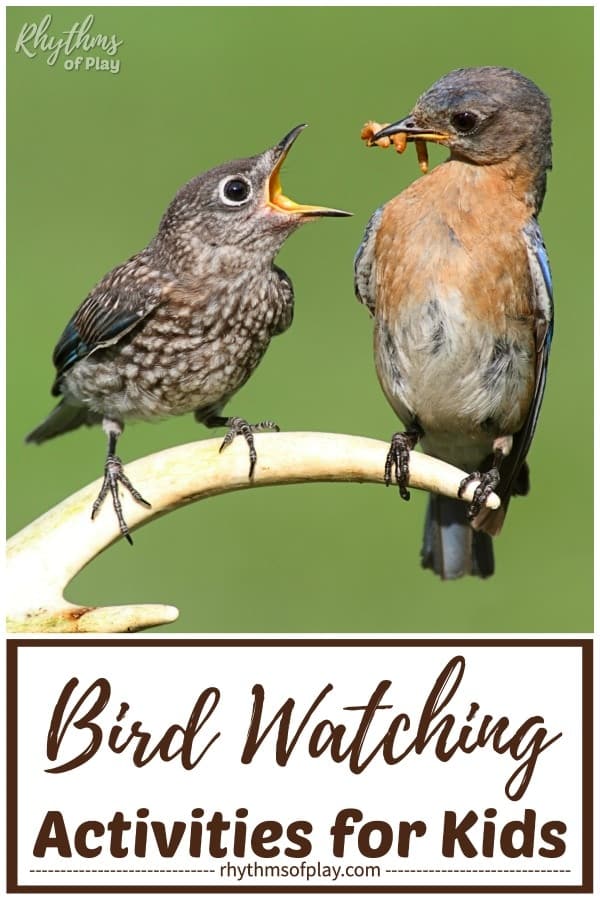
5. Make Your Backyard Bird-Friendly
The best way to bring birds into your backyard (or onto your patio) and help them thrive is with bird-friendly garden plants. Create a bird-friendly environment or habitat for your feathered friends in your backyard. Making or providing backyard bird feeders, standing or hanging birdbaths, and birdhouses are a few easy ways you can make your backyard or patio more bird-friendly.
Our wild backyard bird friends prefer the hanging platform or tray bird feeders with sunflower seeds, thistle sock bird feeders, and suet cake feeders. Hummingbirds, on the other hand, love to drink nectar from the native plants in our backyard, and the glass hummingbird feeders we fill with homemade sugar water mixed at a ratio of four to one. (Mix four cups of hot water with one cup of sugar, or two cups of water with a half cup of sugar, and allow to cool before pouring it into the feeder.) However, there are lots of other fantastic bird-feeding options, so a few more excellent recommendations are on the list below.
Best Hanging Tray Birdfeeders and Birdbaths:
- Hanging Tray Feeder Platform (Mesh)
- Wild Bird Feeder (Brushed copper with squirrel-proof tube)
- Fly-Through Hanging Bird Feeder with Covered Roof & Aluminum Mesh Seed Tray
- Standing Bird Bath (We love and use this in our backyard because it’s easy to clean, looks like real metal, and our wild bird friends LOVE it!)
- Hanging Solar Powered Bird Bath or Bird Feeder for Outside
Another simple way to bring birds into your backyard is with native plants, colorful flowers, or a garden filled with trees and plants that help birds thrive. Learn how to make your backyard bird-friendly with THESE helpful tips from The Audubon Society.
6. Turn Your Yard, Garden, or Patio into a Certified Wildlife Habitat
Another bird-friendly option is to certify your backyard, patio, or garden as a wildlife habitat with the National Wildlife Federation. Wondering How to Get Certified as a Wildlife Habitat? Visit the Natural Wildlife Federation to look at THIS informative guide and get started today!
Anyone can create a welcoming haven for local wildlife. Turning your yard, balcony container garden, schoolyard, work landscape, or roadside greenspace into a Certified Wildlife Habitat® is fun, easy, and can make a lasting difference for wildlife.
The National Wildlife Federation
7. Learn to Identify Birds in the Backyard, Park, and Wild Nature Spaces
Learning how to identify birds is a fun outdoor learning activity for kids from preschoolers to teens. If you have ever heard the question, “What’s that bird?” Or, if you have questions about the birds in your neighborhood or are curious about the pair of wings floating through the sky above you, it’s time to invest in a pair of birding binoculars (monocular telescope with quick cell phone attachment) and a good bird book to help children try this fun birding activity!
My daughter loves to grab her birding binoculars each time she sees a bird in the backyard. We have learned to keep them near the back door next to her nature notebook to avoid the disappointment of the bird being gone by the time she returns. Today, she has a great working understanding of the local birds that frequent our backyard, local parks, and wild natural spaces.
How to Identify Birds:
Teaching yourself how to identify birds is one of the best ways to learn more about them. This birding activity can keep children busy for hours as they look for field marks and other identifying characteristics to attempt to identify the birds they see and look up the birds they don’t know in a bird field guide.
Identifying birds requires keen observation and attention to detail. Start by noting the bird’s size, shape, and overall appearance, coloration, and any distinctive markings. Field marks are physical characteristics such as color, size, shape, the type of beak or bill, and other identifying markings that make each bird unique.
Pay attention to specific features such as bill shape, wing shape, and tail length, as these field marks can vary significantly between bird species. It’s also a good idea to take note of the bird’s behavior, habitat, and the time of year and location where you spotted it, as these factors can also provide valuable clues for identification.
Listening to the bird’s calls and songs can also help narrow down its species. Utilize field guides, birding apps, or online resources to compare your observations and confirm the bird’s identity. With practice and patience, you’ll become more adept at identifying birds with confidence.
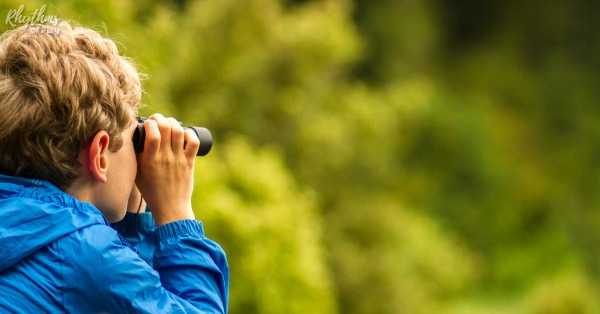
Best Online Bird Guides and Apps for Identifying Birds:
- The National Audubon Society has an online guide to help children identify birds you can find HERE.
- All About Birds also has an excellent online bird guide–> HERE.
- Merlin and eBird are fantastic free birding apps you can use to help identify birds you see and hear.
The Best Bird Field Guides for Children and Adults:
- Here’s a list of the best bird books and birding field guides for kids and adults:
- You will notice that a few of these birding books for kids are also included in our recommended birding supplies, birdwatching books, and learning resources recommended at the beginning of this list of birding ideas.
- Backyard Birds (Field Guides for Young Naturalists) – This birding book is designed for the birdwatching beginner. It features the original art of celebrated naturalist Roger Tory Peterson and incorporates the Peterson Identification System–the most effective method for bird identification.
- Peterson Field Guide to Birds – For decades, the Peterson birding guides have been the trusted guide for birders of all levels, thanks to its unparalleled illustrations and famous bird identification system.
- The Sibley Guide to Birds – This excellent birding resource is used by millions of birders across the globe, from novices to the most advanced, “The Sibley Guide has become the standard by which natural history guides are measured.”
- Sibley’s Birding Basics is a comprehensive and beautifully illustrated guide to identifying birds in the field. This book is an essential companion for birders of all skill and experience levels.
- National Audubon Society Birds of North America – This comprehensive bird book for kids and adults is considered one of the most comprehensive and authoritative guides to the birds of North America. It includes the latest information on conservation status and the effects of climate change. From the world’s most trusted name in birding, Audubon’s guide is beloved by millions of backyard bird enthusiasts and birding experts worldwide.
8. Learn Basic Bird Anatomy with the Parts of a Bird Printable Worksheet
Before learning to identify birds, it’s a good idea to learn the parts of a bird. Learning basic bird anatomy makes it much easier for kids and adults to begin identifying the birds they see. Get the parts of a bird printable anatomy worksheet in the Rhythms of Play Learning Center to help kids learn which part is which!
9. Observe, Count, and Record the Birds You See in the Backyard and the Wild
Observing, counting, and recording birding observations is a fun and educational birding activity for kids. Here are a few simple bird-watching printables (including a bird-watching journal, bird-watching log book observation page, a bird-watching tally chart, bird life list, parts of a bird anatomy worksheet, and a bird count checklist) to help young naturalists learn to identify birds, count the birds they see, and record their birding experiences in the backyard and the wild.
Backyard Bird Watching Observation Activity Ideas:
These bird-watching printables are an excellent nature study resource for kids and adults alike. The printable birding log book pages can help you count and record the number of birds you observe each day, week, or month. So we like to keep them in our homemade nature journals.
- First, use a three-hole paper punch to make holes in the printable bird-watching log and journal pages you like best, and put them in a homemade nature notebook.
- Next, use the printable bird-watching tally sheet or checklist to count and record the number and variety of birds you identify. (Write the names of the most common birds you see in the backyard, park, etc., in the column on the left, and use the tally or checklist to count the number of birds you see each day, week, or month.)
- Add each bird you identify to your printable bird life list.
- Record bird observations and experiences in your bird-watching journal or bird log.
- Finally, submit counts to help scientists collect important data about the birds you correctly identify year-round with eBird or at one of the global bird count events in the next section.
10. Participate in Bird counts Such as the Great Backyard Bird Count, Project Feeder Watch, The Global Big Day, and The Christmas Bird Count.
There are a few global bird-counting events and festivals my family loves to participate in, and we think you will, too! Count and record the number of birds you see and correctly identify in the backyard, local park, nature reserves, and wild outdoor spaces at one of the global bird counting events on the list below.
Not only is it fun to help scientists collect important data about birds and our environment. It’s also interesting to learn something new each time you count birds. Whether it’s identifying a new bird to add to your life list, learning its call or song (and why the bird might be making it), discovering what it likes to eat, or understanding where it builds a nest. Every bit of time spent identifying and counting birds will benefit your education.
Best of all, every bit of data we provide helps scientists better understand and protect birds around the world. Each year, people come together to watch, learn about, count, and celebrate birds at international bird-counting events. Learn more about each global bird counting event and discover how to join the fun below.
International Bird Counting Events:
- The Great Backyard Bird Count is held annually in February. This 4-day count is most often held over a long weekend in February. The next great backyard bird count is February 16-19, 2024.
- The Global Big Day bird count occurs annually on World Migratory Bird Day. In 2024, this international bird counting event is on May 11.
- Project Feeder Watch runs from November 1 to April 30 every year.
- Audubon’s Christmas Bird Count occurs every season from December 14 to January 5.
- Learn more about joining these fun citizen science projects below!
How to Join A Global Bird Counting Citizen Science Project:
- Join the next Great Backyard Bird Count on February 16-19, 2024. Today, it’s easier than ever to join the backyard bird-counting fun. A few fantastic birding apps allow you to count the birds you see (or hear) during the Great Backyard Bird Count. Use Merlin or eBird to identify, observe, record, and submit the birds you correctly identify in your backyard (or anywhere else) to help provide scientists with important data about bird populations. Submit multiple checklists for even more fun! Learn more about this fun birding event–> HERE.
- Become a member of Birding’s biggest team of bird enthusiasts by counting and recording the birds you see or hear for The Global Big Day on May 11, 2024. Like the International Great Backyard Bird Count, you can join this fun birding event from wherever you are. Celebrate World Migratory Bird Day and learn how to participate in this global bird counting event–> HERE.
- Count birds in your backyard feeders from November to April for Project Feeder Watch with The Cornell Lab. To join, download the Project Feeder Watch App and count the birds you see in your backyard feeders from November 1 to April 30, following the directions provided. You do not need to count birds every day, but instead, watch and count for two consecutive days each week. Learn more about Project Feeder Watch–>HERE.
- Audubon’s Christmas Bird Count is from December 14 to January 5 every year. Conservationists started this bird count on Christmas Day of 1900 to promote bird conservation by counting, rather than hunting, birds. The CBC now happens in over 20 countries in the Western Hemisphere! Learn more about this community science event and how to add your counts to the tally–> HERE.
11. Learn to Name that Bird by Birdcall or Song
Encourage children to learn to identify the bird birdcalls of the species of birds that live in your area. Learning bird calls and songs is a great way to identify birds that hide in dense foliage and birds that come out at night. This birdcall identification activity can help children and adults learn to identify birds that look alike but may not sound alike. A few fantastic bird language books for use at home, outdoors, or in the classroom are on the list below. The Merlin app also makes it possible to identify birds by their call, song, or sound.
Books, Audio, and DVDs with Bird Language Basics:
- Bird Songs: 250 North American Birds in Song. Drawing from the collection of the world-renowned Macaulay Library at the Cornell Lab of Ornithology, Bird Songs presents the most notable North American birds with colorful illustrations and a digital audio player with each bird’s distinctive song.
- What the Robin Knows: How Birds Reveal the Secrets of the Natural World. This informative birding book reveals how understanding bird language and behavior can help us to see more wildlife. Author Jon Young proposes that songbirds know everything important about their environment, be it backyard or forest. By tuning in to bird vocalizations and behaviors, we can learn a lot about our world.
- Bird Language Basics with Jon Young DVD: Join expert tracker and nature mentor Jon Young on this journey examining the language of birds. This set will give you the tools you need to see the landscape through the eyes of the birds and bring you to a more intimate relationship with the world unfolding outside your door.
- Bird Language Groups with Jon Young DVD: Bird Language becomes a dynamic indicator of predator-prey relationships to the aware observer. Join Jon Young in this two-disc journey examining the language of birds and bringing you to a more intimate relationship with the world unfolding outside your door.
- Sibley’s Birding Basics: How to Identify Birds, Using the Clues in Feathers, Habitats, Behaviors, and Sounds. Learn how to interpret what the feathers, the anatomical structure, and the sounds of birds are telling you with this informative guide by Sibley.
Learn Bird sounds on the Internet:
- Click–> to HEAR 50 common bird species and the sounds they make.
- Learn more about how to identify bird songs and calls, including five essential tips for beginners–> HERE.
- Or, learn a few fun mnemonics for typical birdsongs with the National Audubon Society–> HERE.
Even Toddlers Can Learn to Identify Birdcalls!
Babies and toddlers love to imitate the sounds they hear from a young age and, thus, like to echo the bird sounds, bird calls, and bird songs they hear in the natural world around them. Help your toddler learn bird language basics with the fantastic birding nature study resource guides listed in the section above.
Our daughter’s favorite bird sounds to imitate are, of course, the woodpecker. She loves to exclaim rat-tat-tat-tat each time she hears or sees one pecking at a tree with its beak. She also enjoys coo-oo cooing gently with doves, squawking with blue jays, cawing at crows, hooting with owls, and quacking around with the local ducks (as shown in the photograph below).
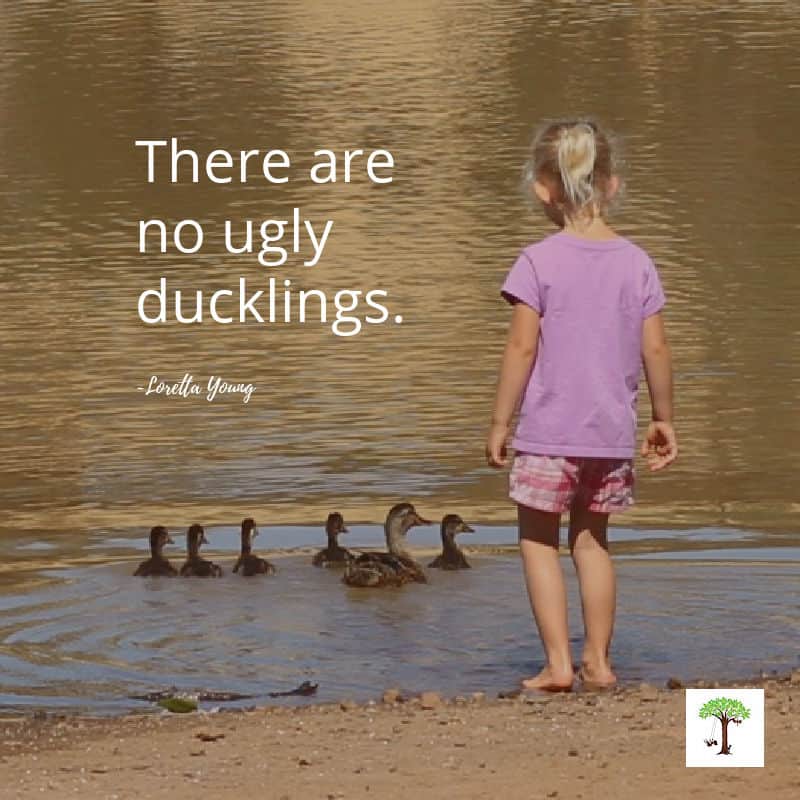
12. Practice Bird “Listening” and identifying Outdoors
Another fun birding activity for kids (and adults) is to identify birds in your backyard or out in the wild by their birdcall, bird-sounds, or bird song. To practice bird listening, use the resources in the section above to learn how to identify different bird sounds and calls. Next, listen to birds outside and attempt to identify them by the sound they make alone. And finally, do your best to “find” the bird with your eyes. It’s not always possible, but it sure is fun!
Different Bird Sounds, Songs, and Calls
Another type of bird listening has to do with understanding the different types of bird sounds and calls that birds make such as territorial disputes, alarm calls, and companion calls. Learning more about each species of bird, and spending time observing birds and listening to the sounds they make, especially in their natural habitat, will begin to give you an indication of what might be going on, so you can understand why they are singing, calling out, or screaming.
Much of the time, what you are hearing, is birds crying out in alarm about your approach or appearance in their space. Especially if you have a pet with you, are speaking loudly with others, or are otherwise making a lot of noise. You will not hear as many bird alarms when you walk outdoors if you tread lightly, approach quietly, and hold peace in your heart.
One of the best ways to listen to bird sounds, calls, and alarms without disturbing and influencing what they might be saying, is to sit quietly for an extended period in your front or backyard. Or even better, sit somewhere quietly out in nature to listen to birds in their natural environment. We highly recommend this birding activity for kids and adults of all ages. Give it a try!
The Day My Toddler Out-Birded Me
My daughter showed me that she could correctly identify geese honking in the sky from a great distance when she was only two years old! While out on a peaceful nature walk, all of a sudden she exclaimed, “Geese!” I said, “What?” She loudly repeated, “GEESE!” as if she was frustrated with my ineptitude. I was about to squash her excitement and tell her that there were no geese (just like any other typical adult ignoring the perceptiveness of their child) when suddenly, I heard a faint honking in the sky!
We looked directly over our heads and saw a perfect “V” of geese flying so high. I was shocked that she was even able to hear them. Let alone correctly identify them. Not only did she accurately identify what they were by the sound of their birdcall, but she noticed them honking through the sky long before I did! They were so high up in our atmosphere that I had to pick her up in my arms and lay her horizontally so she could see them! It was a proud mama and daughter birding moment that we thoroughly enjoyed.
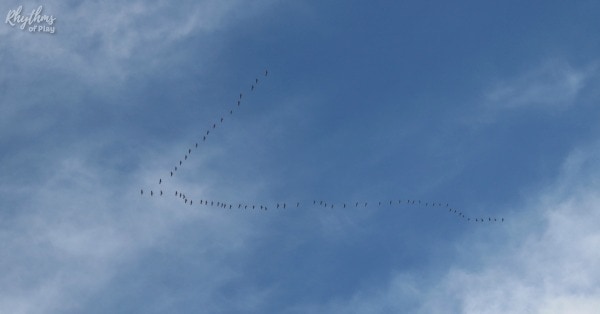
Related: Kids’ Music That Won’t Drive You Nuts!
13. Go on a Bird Walk or Birding Adventure
Grab your nature study supplies and head outside on a bird walk to practice identifying birds by sight or sound, or try one of the fun bird scavenger hunt ideas below. Alternatively, plan an adventure to an area known for bird-watching near you, such as a large outdoor park or nature reserve.
Wondering what to bring bird watching? At the very least, we recommend beginning with a good pair of binoculars (or a cell phone or camera with a telephoto lens) to observe birds. (Choose from the birding basics on the list of recommended bird-watching supplies above.)
It’s also a good idea to invest in at least one birding field guide or field journal to help you identify the birds you see and hear. We also recommend bringing water, snacks, sunscreen, and a few other useful nature study supplies along with you on birding adventures in the great outdoors.
14. Birding Scavenger Hunt Ideas
Here are a few bird scavenger hunt ideas my daughter and I came up with. We hope you enjoy them as much as we do!
Bird Counting Scavenger Hunt:
- You can do this fun and educational birding scavenger hunt in two different ways:
- Start by counting the number of bird species you can identify by sight or sound for the day, such as the number of wrens, goldfinches, cardinals, jays, or American robins you see (or hear).
- Or, add the number of birds you see or hear to the number of birds you have seen of each species in your birdwatching or nature journal for the week, month, year, or lifetime.
Find That Bird Scavenger Hunt:
- Is there a bird you would love to see but haven’t yet? Then, head out on a scavenger hunt to find the bird, or birds, that continue to illude you with this fun bird-seeking activity:
- First, research the bird’s favorite habitat, food, bird call or sound, and waking and sleep patterns.
- Next, head out on an adventure in search of that bird!
- Once you find it (hear it or see it), take a picture of it if you can, and add the new bird you found to your printable bird life list!
Bird Feather Scavenger Hunt:
- Here is another fun birding scavenger hunt idea. Invite children on a scavenger hunt in search of bird feathers! Follow the step-by-step instructions below to try this fun bird scavenger hunt birding activity for kids:
- First, head outside to search for feathers in your backyard, neighborhood, or local park.
- Next, challenge the kids to use one of the bird field guides recommended above or use a book titled Bird Feathers: A Guide to North American Species to identify which bird each feather came from.
- Finally, record the types of bird feathers you find, put them in a pocket or pencil pouch dedicated to bird feathers in your nature journal, or keep a few of your favorite bird feathers in a vase on your nature table.
Related: Nature Sensory Bin Scavenger Hunt
15. Draw or Paint Birds
Another fun birding activity for kids and a great way to learn more about them is to draw or paint them. Use colored pencils (or watercolor pencils) to draw birds or watercolors to paint birds onto cardstock, watercolor paper, or directly into a nature journal or birding log book.
Drawing and painting birds can help anyone learn more about them. Try any of the “How to Draw Birds” books on the list below. We love and recommend “The Laws Guide to Drawing Birds,” a favorite in our homeschool art room.
Best Books About How to Draw Birds:
- The Laws Guide to Drawing Birds (Our favorite bird drawing book.)
- How to Draw Amazing Birds from Songbirds to Birds of Prey
- How to Draw Birds: A Step-by-Step Guide for Realistic Drawing Projects
- Drawing: Birds: Learn to draw step by step (How to Draw & Paint)
Learn to Draw a Bird on the Internet:
- How to draw a bird: Learn to draw a bird with David Sibley on Audubon–> HERE.
- Drawing birds with John Muir Laws–> HERE.
- How to draw a bird step-by-step tutorial–> HERE.
16. Take Pictures of Birds
Many birding enthusiasts worldwide carry a cell phone with a camera and telephoto lens attachment or a DSLR camera with a telephoto lens instead of binoculars to observe a bird and capture its photo! Taking a picture of a bird makes it possible to use a birding field guide to figure out what it is later instead of attempting to identify an unfamiliar bird in the wild.
If birding is an activity you or your children enjoy, consider investing in photography lessons and a good camera with a telephoto lens or a cell phone camera lens. You may find that you want to capture pictures of your bird friends, the birds you meet along the way, and rare captures worthy of the birding photography wall.

17. Make a Birds Nest: A STEAM Birding Activity for Kids
Creating a bird’s nest is a fun STEAM challenge for kids preschool age and up. Invite children to make a bird’s nest as a fun and educational birding activity for kids. To do this birding activity, first, encourage children to head outside, searching for items a bird would use to make a nest.
You might want to remind children that many birds don’t build their nests in trees. And some don’t build a nest at all! Please encourage them to think creatively before starting this nest-building activity. Look through this fun, informative Birds, Nests, and Eggs birding book with children to help them learn how and where birds build their homes and all about their young. If you are curious and want to learn more about the fascinating variety of bird nests; Check out Peterson Field Guide To North American Bird Nests.
Next, invite them to use natural materials they collect to make a bird’s nest. Nest building is a self-motivated activity for our daughter; she has been making bird nests from nature’s scraps since she was a toddler. One of her many nests is pictured below. She has also fashioned a few nests in hollow logs, a clay mud nest on a wall, and some great ground nests in clumps of tall grass over the years.
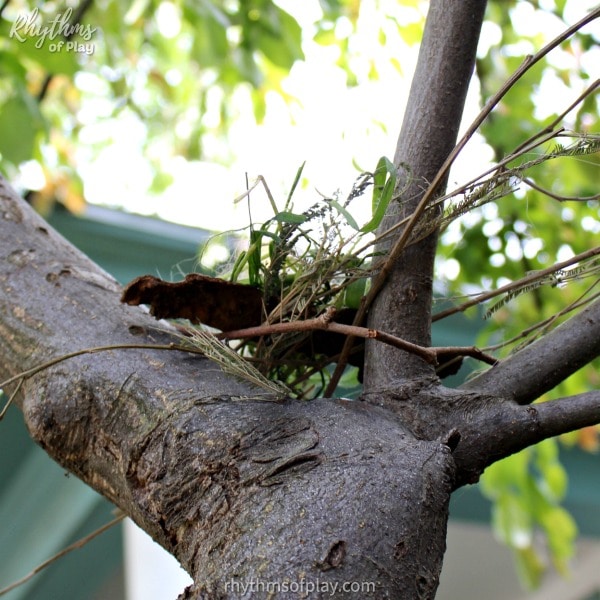
18. Play Bird Games to Learn More About Birds
Playing games with and about birds is a fun and interactive way for both children and adults to learn more about them. Try the bird games that teach children about birds for toddlers to teens on the list below. (They are in order of age recommendation, with the more advanced bird games for older children and adults towards the bottom of the list.)
Best Games About Birds for Kids and Adults:
- Bird Families: A high-flying card game based on happy families and go fish for players ages two and up. In Bird Families the aim is to get as many sets of birds as you can. Collect four of each bird species before your opponents. This beautiful game comes with a booklet describing each species of bird featured.
- Sibley Backyard Birds Matching Game: A memory game with 20 matching pairs for children by Sibley Birds. With beautiful watercolor bird illustrations from leading ornithologist David Sibley, this 40-piece matching game for children ages three and up is sure to charm both kids and parents.
- What The Flock: A hilarious game of words and birds perfect for word enthusiasts and bird lovers ages three and up. Through skill, chance, and strategy, be the fastest to assemble your bird by playing various word games. An ideal addition to game nights and family gatherings.
- Wingspan (Base Game): A relaxing, award-winning strategy board game about birds for birders ages fourteen and up. In this educational birding game, players are bird enthusiasts, researchers, bird watchers, ornithologists, and collectors seeking to discover and attract a beautiful and diverse network of birds to their wildlife preserves.
- Bird Brains: A trivia card game for bird lovers. Test your knowledge about Birds with this fun game for birders ages fourteen and up!
- Sibley Birder’s Trivia Card Game: Here’s a bird trivia game for players ages fourteen and up with 400 questions to test every birder’s knowledge from the bestselling author and ornithologist David Allen Sibley.
- What Bird Am I?: A bird identification game for birding fanatics ages fourteen and up. This game is perfect for novice, and intermediate birdwatchers, as well as truly serious birders. Test your species identification skills with this educational bird game!
19. Study a Bird or Species of Birds (Conduct a Bird Study)
Once children become interested in birding and all the birds they hear and see around them, a great way to extend their learning is to study a particular bird or species of bird. Spend time observing it in its natural habitat. Look it up in your birding books and field guides, head to the library in search of information, and do a Google search for fun ways to learn more. “When we follow our children’s interests, they are much more interested in learning.”
For example, hatching chicks and tending a small flock of chickens is a great educational birding activity for homeschoolers. As a toddler, and today at eleven, our daughter is extremely fond of her fowl friends. She loves tending to and playing with the chicks and hens we keep in our coop and free-ranging in our backyard. Collecting eggs and giving them food and water are also jobs she thoroughly enjoys. She is even known to herd them toward the vegetation they like best and find bugs for them to eat. That’s the definition of hands-on learning! Look at how happy she is as a toddler with the chicken in the picture below.
20. TRy a Few Bird Science Activities
Another fun way to learn more about birds is with the standards-aligned science lessons on Mystery Science. Captivate your children or students with engaging bird lessons and assessments that help them learn more about birds.
21. Contribute to Bird Conservation Efforts
Kids can play a vital role in bird conservation efforts through various engaging and educational activities. Fortunately, most ways we can do this (as adults we are not exempt) have been briefly discussed throughout this article. Following is a summary of several ways children and adults can contribute to conservation efforts to help birds and our environment flourish:
- Bird watching can raise awareness about the diversity of bird species on our beautiful green and watery planet and the importance of each habitat.
- By hanging and building birdhouses and feeders and planting bird-friendly garden plants, kids can provide safe nesting places and food sources for birds, especially during migration and the winter months. These birding activities help bird conservation efforts immensely.
- Engaging in citizen science projects, such as the bird counts mentioned above, allows kids to contribute valuable data that helps scientists monitor bird populations and their health.
- Additionally, advocating for bird-friendly practices in their communities, like planting native plants, keeping cats indoors, and reducing window collisions, can significantly impact them.
Each of these activities can contribute to the protection and preservation of bird species and instill in young conservationists a sense of responsibility and connection to the natural world. And this is a great recipe for our future.
More Educational Birding Resources for Children
A few more excellent educational birding resources for children are listed below.
Best Bird-Watching Printables for Kids and Adults
If you haven’t already, get this amazing bird-watching printable bundle on the list below for one low price–> HERE! Or purchase your favorite printable birding journal from the list below:
- Printable Bird Life List
- Bird Watching Log Book Observation Sheet
- Printable Bird Watching Journal Sheet
- Bird Watching Tally Chart
- Parts of a Bird Printable Bird Anatomy Worksheet
- Bird Watching Checklist
Educational Birding Games and Activities for Children Bundle
Study birds with children while playing games, working on crafts, completing STEM challenges, and doing other hands-on activities at home or in the classroom with THIS educational birding bundle for kids from Adventure in a Box. With this birding bundle, students can explore:
- Birds’ plumage and dimorphism in birds
- The diversity of the birds, as well as their distinctive features
- Birds’ eggs and parenting habits
- 48 different species of bird
- Birds’ houses and engineering skills
The combination of pictures, icons, and limited language in most games and activities within the birding bundle makes the lesson plans suitable for preschool through middle school children. Enjoy exploring the world of birds at home or in the classroom with THIS fun and educational birding bundle for kids!
Birding Lessons and Learning Activities for Kids
Learn more about birds and their habitats with lessons tailored to students of all ages. Learn more birding lessons and bird-watching activities for kindergarten through 12th grade students with The Cornell Lab.
From free curricula to all-inclusive kits, the Cornell Lab of Ornithology has a wide variety of lessons and activities to captivate learners of all grade levels.
The Cornell Lab
Related: Spring Books for Kids
Birding Activity Ideas for Kids
Birdwatching offers a gateway to exploration, science, and environmental awareness that can last a lifetime. Become a mentor by igniting a sense of wonder and curiosity about birds in the minds of children.
Introducing children to the birding world with the birdwatching ideas above can be an enriching experience. It provides an opportunity for them to connect with nature and cultivates curiosity, observation skills, and a sense of appreciation for the diverse avian species around them.
Whether you are a parent or a nature school teacher, grab your binoculars, head outdoors, and embark on a memorable birding journey with your kids or students with the birding activity ideas above. Doing so will foster a lifelong interest in nature, and instill values of conservation and stewardship in the next generation.
More Outdoor Activities for Kids
- Outdoor Learning and Nature Activities for Kids
- Nature Study for Kids
- Planting Sunflowers with Kids
- Search for Signs of Spring
- Planting Spring Flowers with Kids
- Skipping Stones
- Rock Balancing and Stone Stacking Art
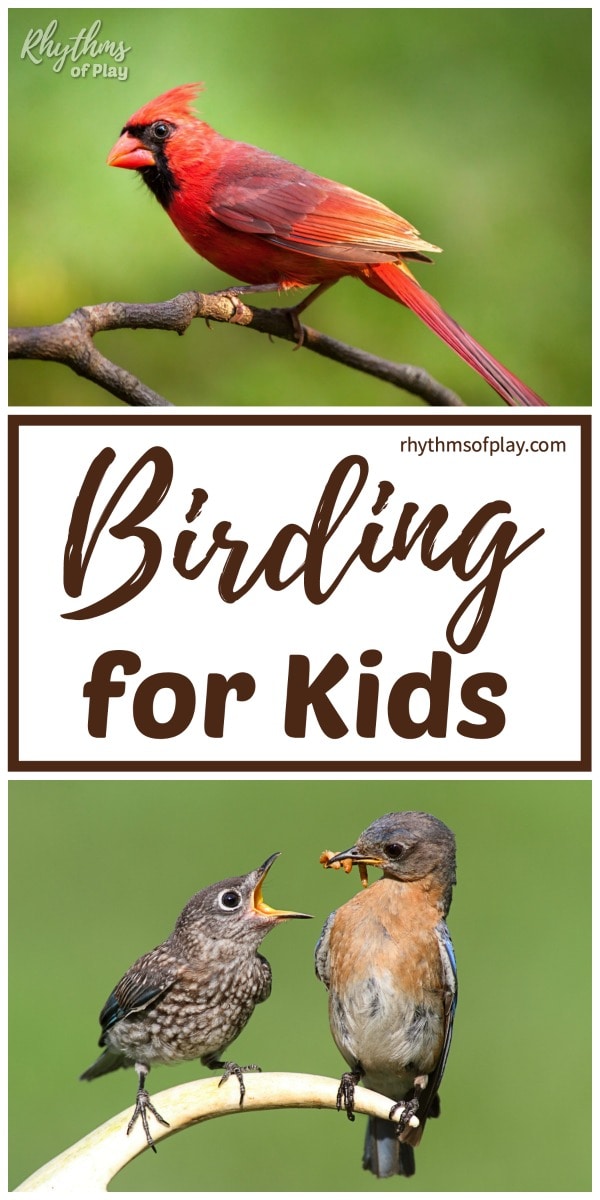

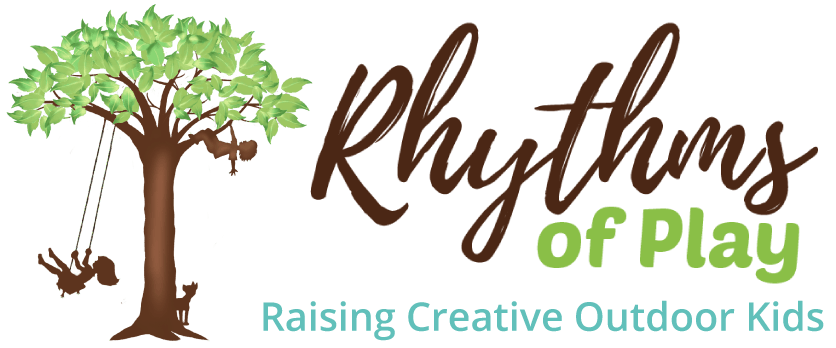
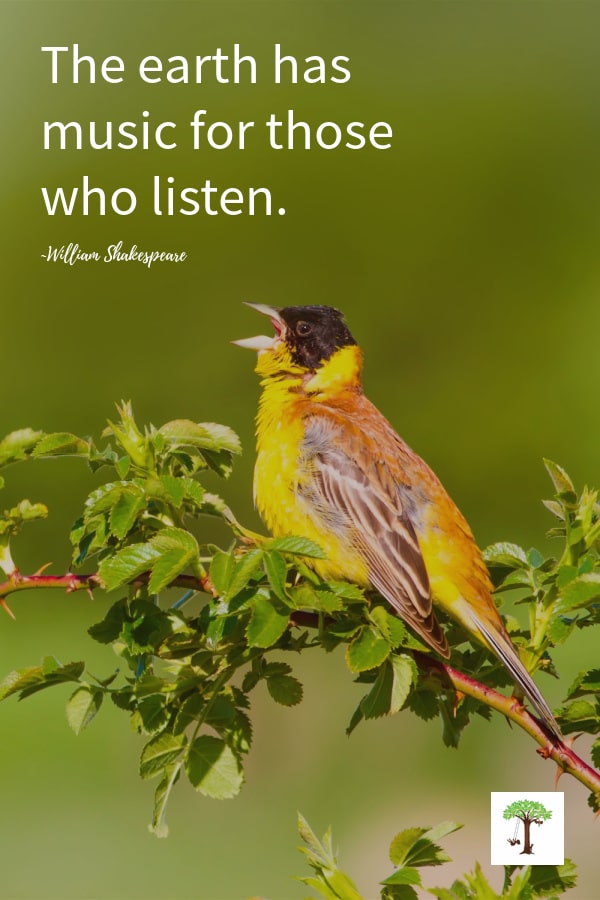
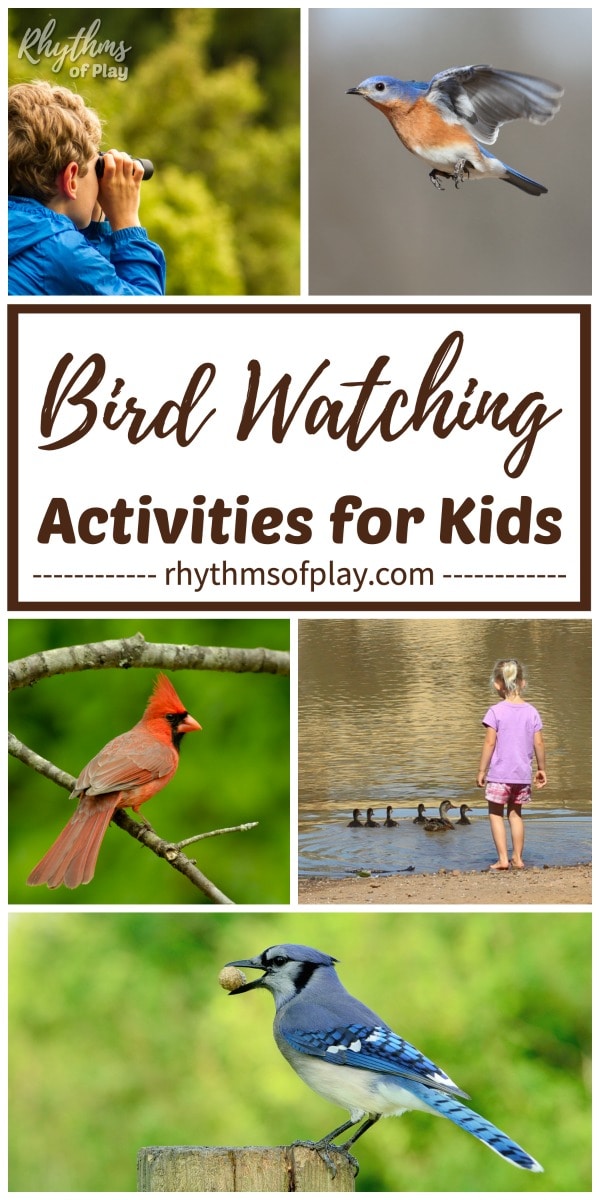
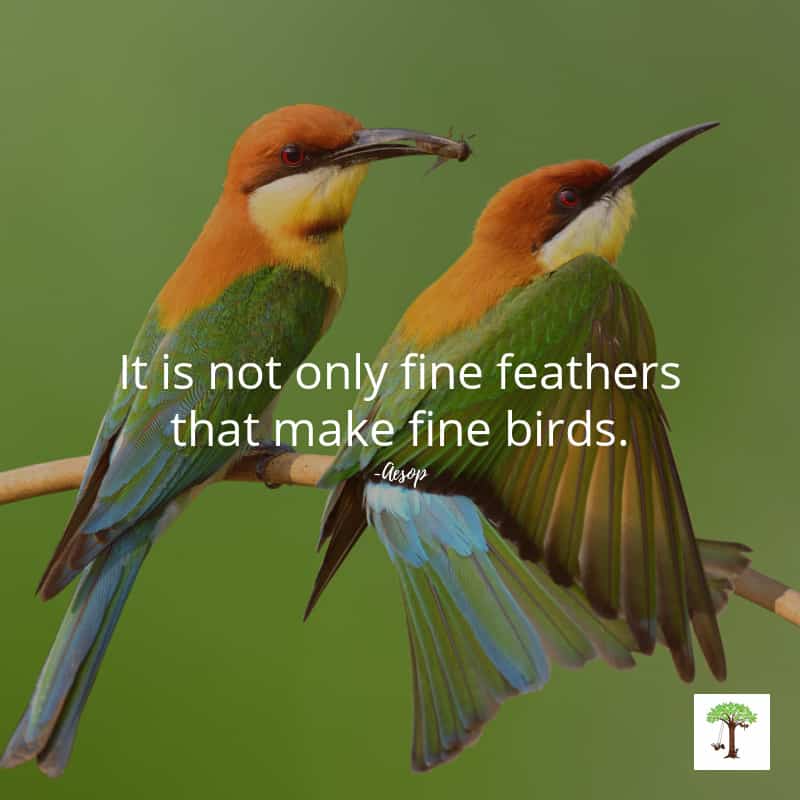
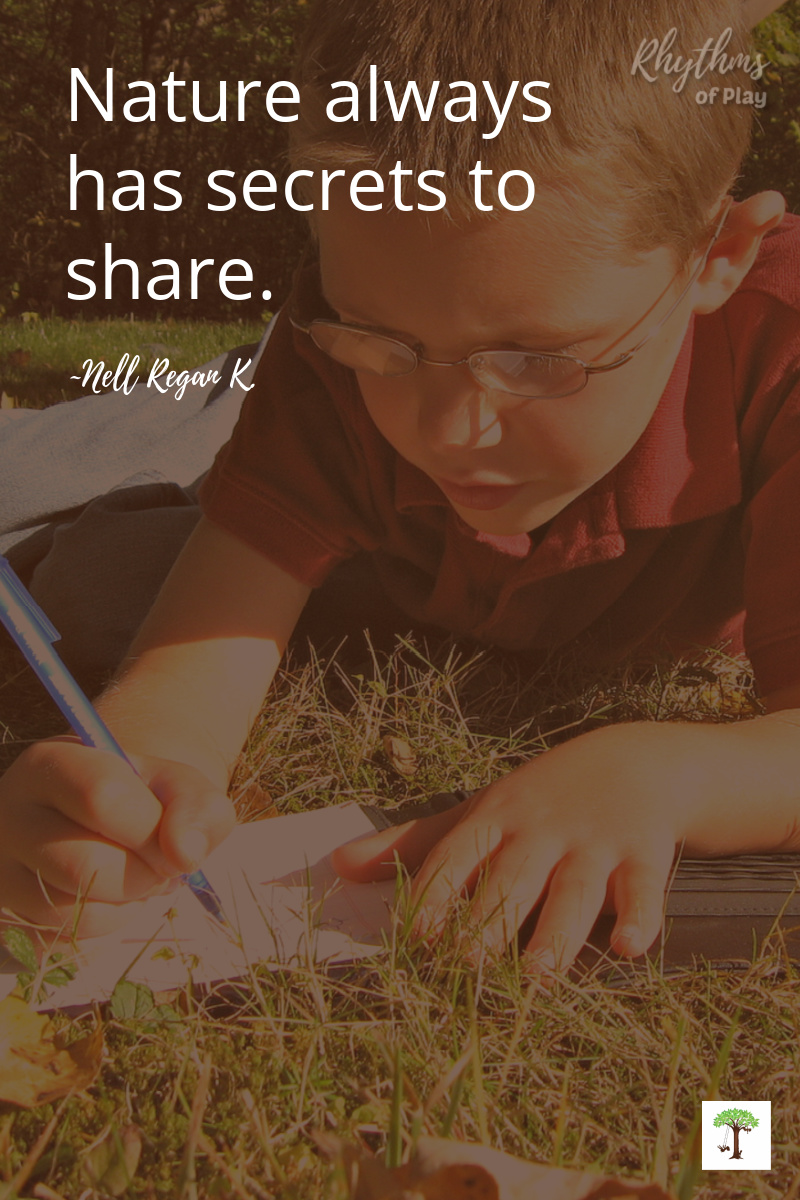
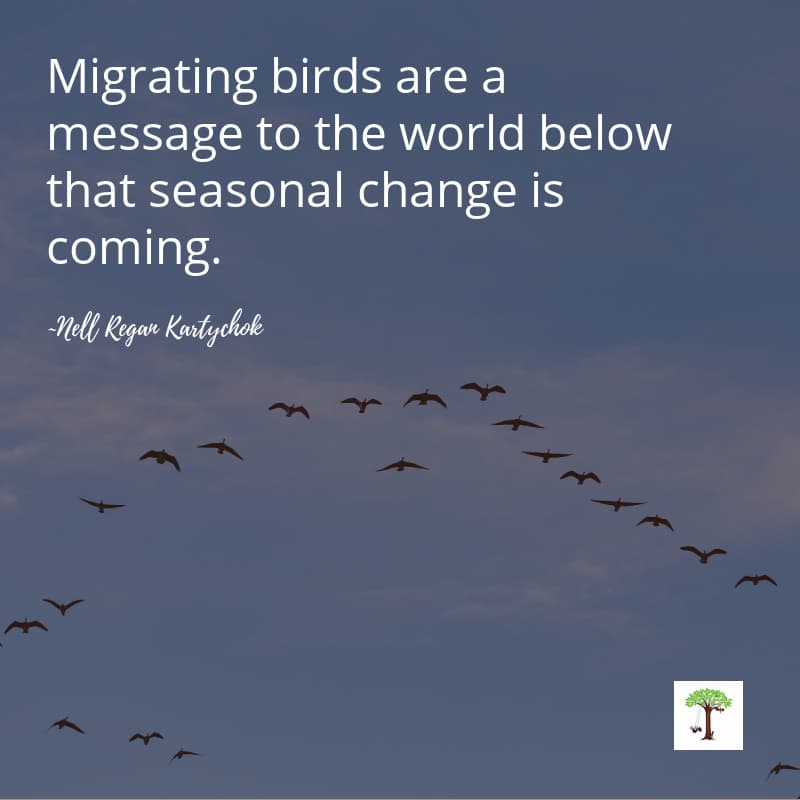
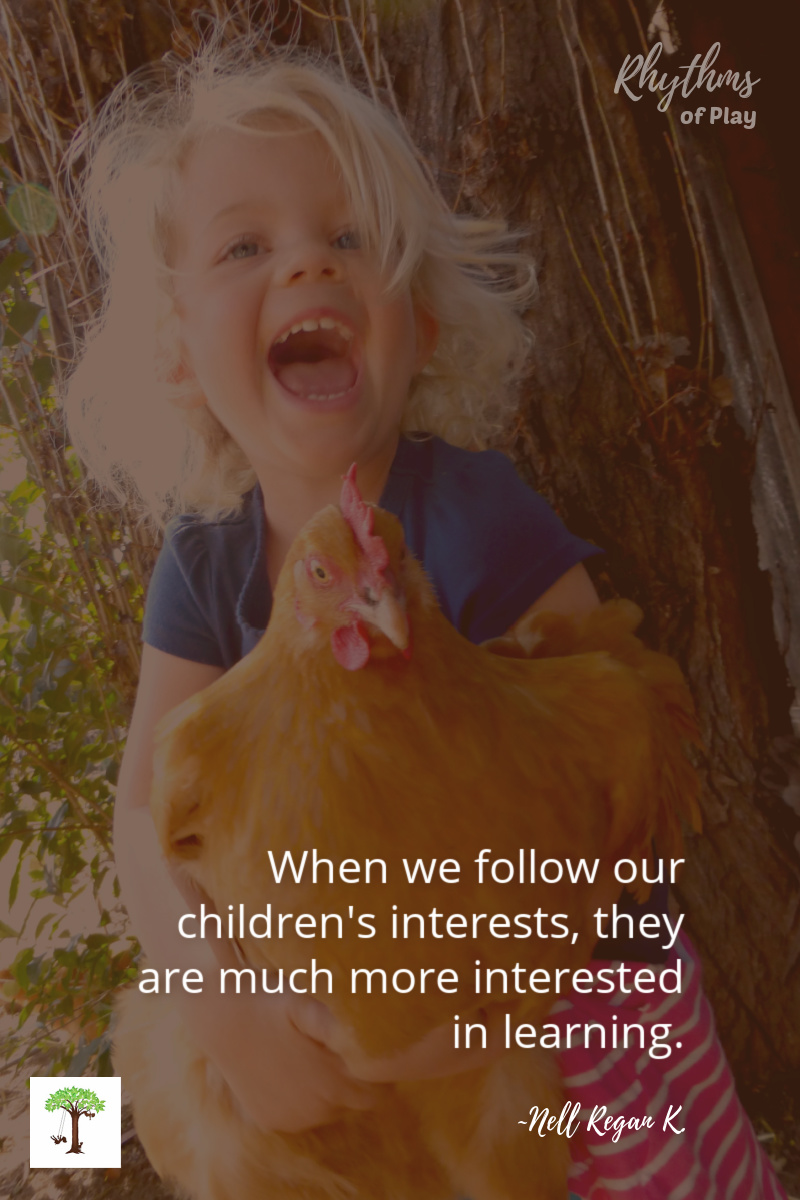

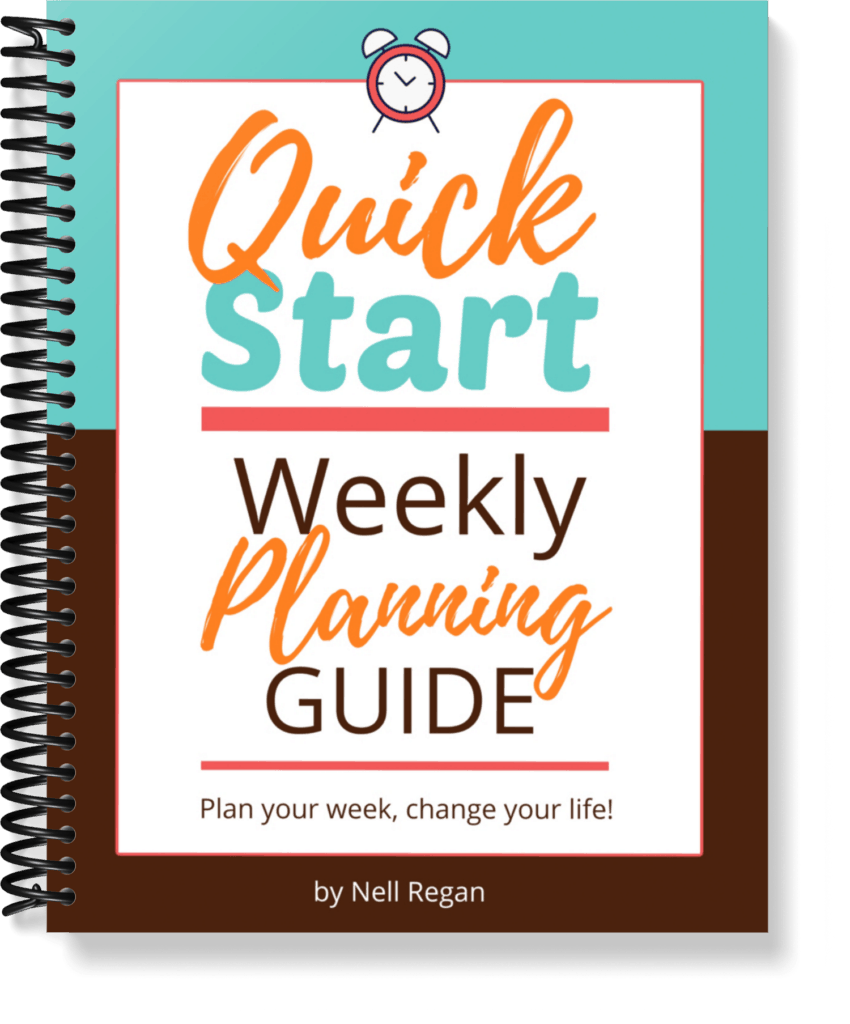
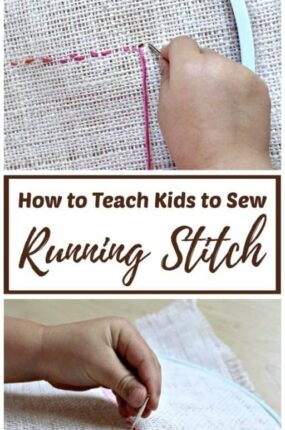
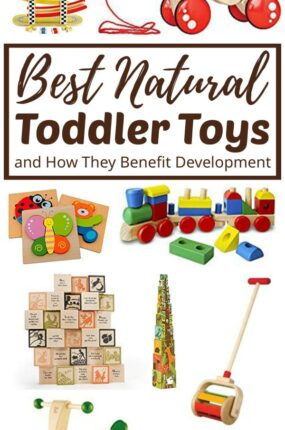
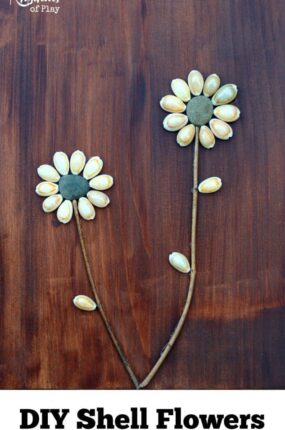
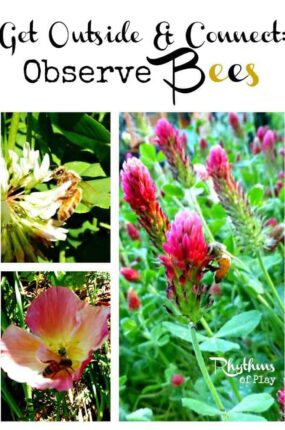
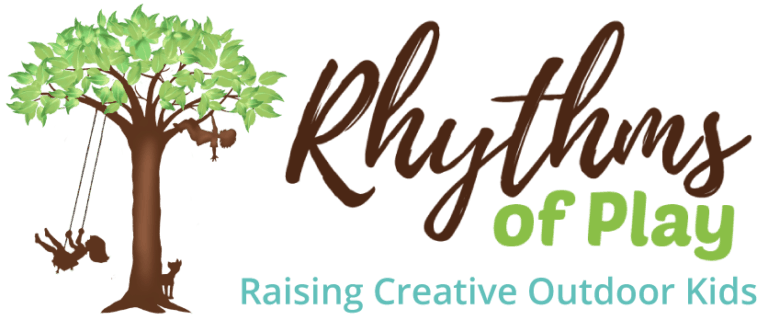
I like how you mentioned teaching children to identify different birds that they can look up. My son loves to watch the birds fly to our bird feeder every morning and I want to get him more into bird watching. I’ll have to try some of these tips to pique his interest even more for bird watching.
Thanks Taylor! Bird identification with a field guide is a great way to get children interested in birding. Thanks for stopping by, happy backyard birdwatching!
Wow – very comprehensive article! May I suggest adding a section on making bird houses and feeders? You can use natural objects such as logs or pinecones (and many other things) to make an easy bird feeder. And building a birdhouse is a great way to help kid develop eye-hand coordination and learn basic woodworking skills – with adult help of course. Thanks again for this well-thought-out article!
Thanks for the vote of approval and advise, Joy. I have plans to add a section on making bird houses and feeders, including the bird feeders my husband and I have designed, but I haven’t gotten to it yet. I will post them and add them to this birdwatching post someday soon, so stay tuned!